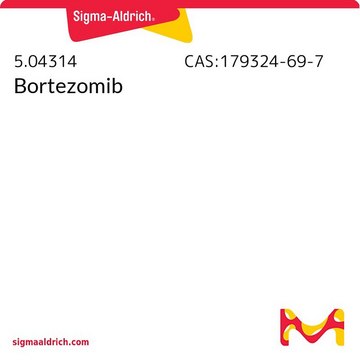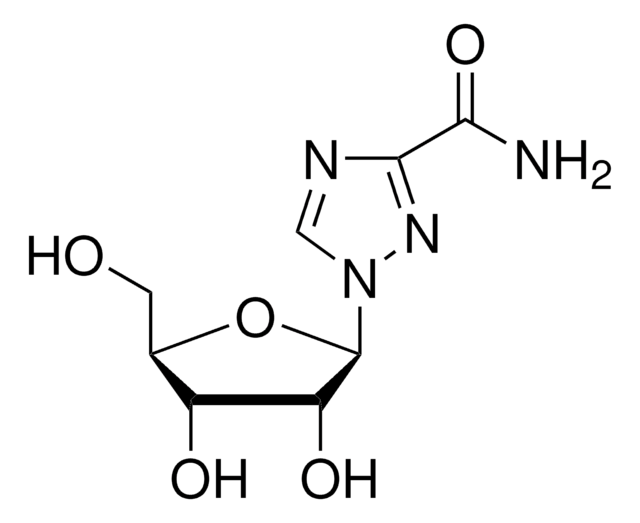R2146
Radicicol from Diheterospora chlamydosporia
solid
Synonym(s):
Monorden, [1aS-(1aR*,2Z,4E,14*,15aR*)]-8-Chloro-1a,14,15,15a-tetrahydro-9,11-dihydroxy-14-methyl-6H-oxireno[e][2]benzoxacyclotetradecin-6,12(7H)-dione
About This Item
Recommended Products
form
solid
Quality Level
greener alternative product score
old score: 15
new score: 9
Find out more about DOZN™ Scoring
greener alternative product characteristics
Waste Prevention
Atom Economy
Use of Renewable Feedstocks
Learn more about the Principles of Green Chemistry.
sustainability
Greener Alternative Product
color
white to yellow-white
solubility
ethanol: 10 mg/mL
antibiotic activity spectrum
fungi
greener alternative category
Mode of action
enzyme | inhibits
storage temp.
−20°C
SMILES string
C[C@@H]1C[C@H]2O[C@@H]2C=C\C=C\C(=O)Cc3c(Cl)c(O)cc(O)c3C(=O)O1
InChI
1S/C18H17ClO6/c1-9-6-15-14(25-15)5-3-2-4-10(20)7-11-16(18(23)24-9)12(21)8-13(22)17(11)19/h2-5,8-9,14-15,21-22H,6-7H2,1H3/b4-2+,5-3-/t9-,14-,15-/m1/s1
InChI key
WYZWZEOGROVVHK-GTMNPGAYSA-N
Gene Information
human ... HSP90AA1(3320) , SRC(6714)
rat ... Src(83805)
Application
- to study its effects on lifespan extension and health in Caenorhabditis elegans
- to study its effects on protein aggregation in yeast
- to study its effects on xanthone sensitized cancer cells
Biochem/physiol Actions
Caution
Signal Word
Danger
Hazard Statements
Precautionary Statements
Hazard Classifications
Acute Tox. 3 Oral - Carc. 1B - Muta. 1B
Storage Class Code
6.1C - Combustible acute toxic Cat.3 / toxic compounds or compounds which causing chronic effects
WGK
WGK 3
Flash Point(F)
Not applicable
Flash Point(C)
Not applicable
Regulatory Listings
Regulatory Listings are mainly provided for chemical products. Only limited information can be provided here for non-chemical products. No entry means none of the components are listed. It is the user’s obligation to ensure the safe and legal use of the product.
EU REACH Annex XVII (Restriction List)
Choose from one of the most recent versions:
Already Own This Product?
Find documentation for the products that you have recently purchased in the Document Library.
Customers Also Viewed
Our team of scientists has experience in all areas of research including Life Science, Material Science, Chemical Synthesis, Chromatography, Analytical and many others.
Contact Technical Service

















